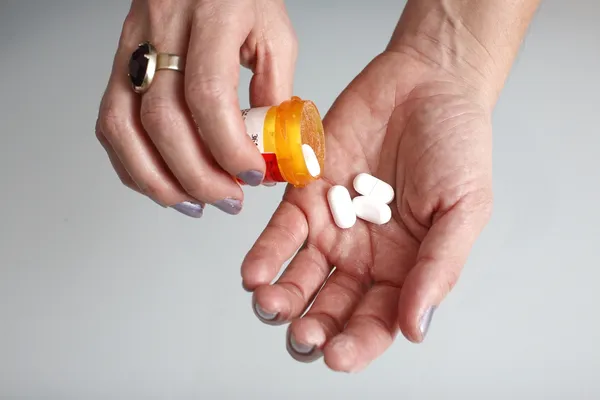Often referred to as the sunshine vitamin, vitamin D is made within the body when your skin is exposed to sunlight. But getting enough rays can be especially challenging in the winter, when grey days are more common.
If this lack of exposure is not offset by vitamin D food sources or supplements, a deficiency can result. And since vitamin D is a vital nutrient to the body, not getting a sufficient amount of it can increase a person’s risk of serious health problems, including cardiovascular disease and cancer. Therefore, it’s important to understand what can cause vitamin D deficiency, and the signs and symptoms to be mindful of if it occurs.
Think you might have a Vitamin D Deficiency? Increase your intake with NatureWise Vitamin D Supplements (4.5+ rating on Amazon with over 10K consumer reviews). (As an Amazon Associate this site may earn from qualifying purchases.)
Causes
1. Insufficient Amounts in Diet
In addition to sunlight, most people get their vitamin D intake through the foods they eat—including fish and fish oil, eggs yolks, beef liver, and dairy and grain products that have been fortified with the nutrient.
But, as most of these food sources are animal-based, WebMD says vitamin D deficiency is more likely to occur in those who “suffer from milk allergies, or adhere to a strict vegan diet.”
2. Limited Exposure to Sunlight
As mentioned earlier, the sun’s rays are the primary way a person gets vitamin D, because when the skin is exposed to sunlight it triggers the body to make the nutrient from cholesterol. This may be a particular issue for those who “are homebound, live in northern latitudes, wear long robes or head coverings for religious reasons, or have an occupation that prevents sun exposure,” says WebMD.
Although, MedicineNet.com adds that even in places that get plenty of sunshine, a deficiency may occur because the SPF in sunscreen decreases vitamin D synthesis, and “Most adults work indoors and wear more clothing during the work week, which leaves only about 10- to 15-percent of their body exposed to UV for short periods.”
3. Dark Skin
The color of a person’s skin can also impact the amount of vitamin D their body produces through sun exposure. In fact, Mercola.com says, “…if you have dark skin, you may need as much as 10 times more sun exposure to produce the same amount of vitamin D as a person with pale skin!”
The source goes on to explain that this is because “…skin pigment acts as a natural sunscreen, so the more pigment you have, the more time you’ll need to spend in the sun to make adequate amounts of vitamin D.”
4. Malabsorption
Even if you’re eating lots of vitamin D food sources, a deficiency can still sometimes occur. This may be due to malabsorption, where the intestines struggle to absorb the vitamin D that naturally occurs in these foods.
Mercola.com explains that this is because vitamin D is a fat-soluble vitamin, and certain gastrointestinal conditions can affect the body’s ability to absorb fat. Such medical conditions include celiac disease, cystic fibrosis, and inflammatory bowel disease (i.e., Crohn’s disease and ulcerative colitis).
5. Obesity
A person’s weight can also increase their risk of developing vitamin D deficiency. As mentioned earlier, vitamin D is a fat-soluble vitamin, so in those who are obese “…their body fat binds to some vitamin D and prevents it from getting into the blood,” explains the U.S. National Library of Medicine.
As a result, WebMD says, “People with a body mass index of 30 or greater often have low blood levels of vitamin D,” and therefore require a greater amount of the nutrient than those who are slimmer.
6. Age
Age is another contributing factor for vitamin D deficiency. There are a few reasons for this, the first of which is that older people typically spend more time indoors, decreasing their opportunity for sun exposure.
Secondly, even when they do catch some rays, their skin doesn’t produce as much of the nutrient as it would have when they were younger. And, thirdly, of the vitamin D that is produced in people who are over the age of 50, their kidneys struggle to convert it into the active form that is used by the body.
7. Medications and Certain Medical Conditions
Certain medications can cause a person to have vitamin D deficiency, as MedicineNet.com explains that they “can enhance the breakdown” of the nutrient in the body. Such medications include antifungal drugs, anticonvulsants, glucocorticoids, and those used to treat human immunodeficiency virus (HIV) and acquired immunodeficiency syndrome (AIDS).
The source adds that low levels of vitamin D can also occur in people with medical conditions such as chronic kidney disease, primary hyperparathyroidism, chronic granuloma-forming disorders (such as sarcoidosis and tuberculosis [TB]), and some lymphomas (a type of cancer).
Symptoms
8. Frequent Illness
When it comes to symptoms of vitamin D deficiency, frequent illness such as with a cold or influenza—may be among the most common. That’s because “One of vitamin D’s most important roles is keeping your immune system strong so you’re able to fight off the viruses and bacteria that cause illness,” says Healthline.com.
The source adds that vitamin D deficiency has also been linked to respiratory conditions such as bronchitis and pneumonia.
9. Fatigue
Fatigue, or tiredness, is an easy symptom to dismiss, as people often attribute such feelings to stress or an insufficient amount of sleep. But it may in fact be due to vitamin D deficiency, as HealthyWay.com says it is “one of the vitamins your body needs to create energy.”
Additionally, the source says that this tiredness can make you less likely to go outdoors, further decreasing your opportunity to get some vitamin D through sun exposure, causing your body’s levels of the nutrient to deplete even further.
10. Bone Pain
Vitamin D is essential for the health of your bones, as it helps the body to absorb calcium. So, if you’re experiencing pain in your bones or in the lower back area, it may be a sign you have vitamin D deficiency.
This deficiency, especially in severe cases, can inhibit the body’s ability to generate new bone tissue, “leading to the softening of bones known as osteomalacia (or “adult rickets”), which causes pain and increases the risk of osteoporosis,” says HealthyWay.com.
11. Depression
Vitamin D deficiency can also lead to depression. In fact, MedicineNet.com says it “has been associated with an 8- to 14-percent increase” in the mental health condition. Although research into this link is still new, it is believed that it may be due to the fact that vitamin D helps to “protect against the depletion of serotonin and dopamine,” hormones that affect mood.
As a lack of sufficient sun exposure is often the cause, therapeutic light boxes have become a popular way to help the body produce vitamin D indoors, especially in areas of the world that experience several months of dark winter weather.
12. Excessive Sweating
Interestingly, a sweaty forehead is one of the first signs of vitamin D deficiency. In fact, Mercola.com says “Physicians used to ask new mothers about head sweating in their newborns for this very reason.”
And, according to Prevention, this symptom isn’t unique to infants. “The same rings true for adults,” the source says, “so if you’re ‘glowing’ while your activity level remains steady, your temperature is close to 98.6°, and you’re in a moderate temperature environment, you may want to consider a vitamin D test.”















